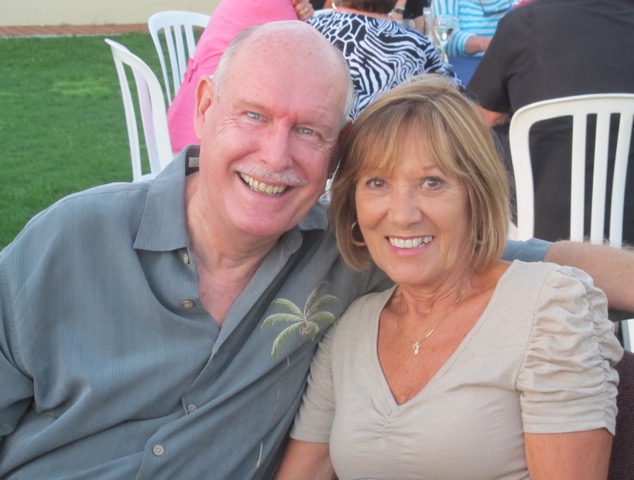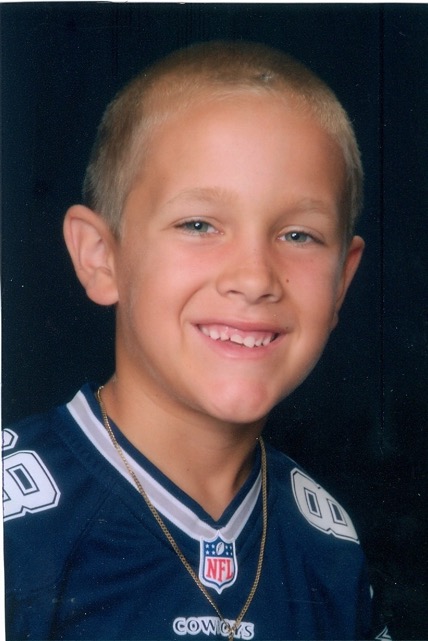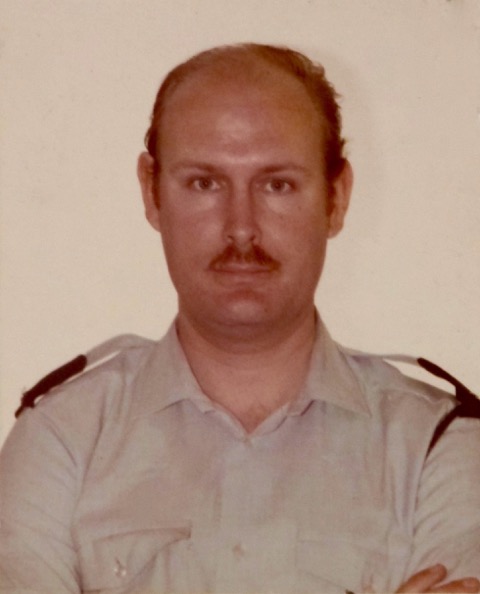
I was born in 1947 in Southend-on Sea, in the county of Essex in the United Kingdom. My father was in the Royal Air Force and our family travelled all over the U.K. on different air bases and also abroad to Southern Rhodesia, South Africa and Kenya (where I learnt to speak Swahili). Upon returning to the U.K. and finishing school in 1963, I joined the Leicestershire and Rutland Constabulary as a Cadet and later served there as a Constable in Melton Mowbray (home of the pork pies) and Rutland (the smallest county in England).

This was at the time of all the U.K. amalgamations and our Force joined together with the Leicester City Police under the new name of Leicestershire Constabulary.
I then later served in Syston and Leicester gaining experience in both city and rural policing. During one of my patrols on a foot beat, I came across a house on fire. Upon hearing cries from within, I broke in and managed to save the three children who had been left alone, when their mother went out to the local pub. The cause of the fire was never determined and that was my first commendation.
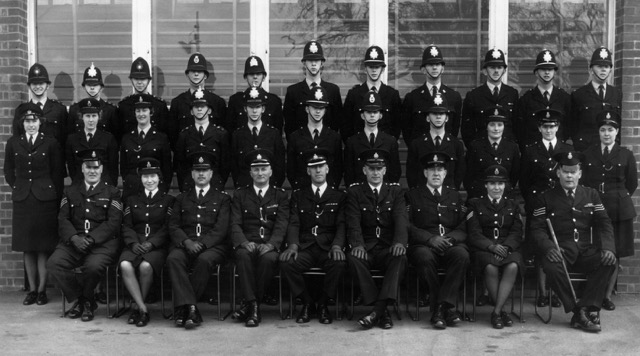 Passing Out Parade at Ryton-on-Dunsmore
Passing Out Parade at Ryton-on-DunsmoreI had been taught to drive to the ‘police system of car control’ as a Cadet by the Force driving school and at that time received my driving authorisation (Police Licence). One day working the early shift 6.00 am to 2.00 p.m. I was called back to the station and upon reporting to the Sergeant I was asked if it was true that I had a police licence. Upon confirming this (and showing it to him), I was sent home only to return again at 6.00 p.m. to commence an 8 hour crime patrol shift in an unmarked green Austin A55 van. This proved to be very successful where many arrests followed.
On another occasion I was driving an Austin J4 van on nights and returning to the station to knock off. We were 10 minutes away driving along a dual carriageway when suddenly there was a loud crash. A vehicle behind us had driven into the back of our van, but not only that, it had mounted the rear steps and actually driven inside the rear of the van and we were now pointing skywards. The car a Standard Vanguard Sportsman contained three escapees from a Borstal prison. They could not escape as they were wedged inside our van so could not open the doors or windows.
My true love of course was traffic and I managed to get accepted at the young age of 20 (still on probation), I was given a brand new Jaguar and sent on my way (totally in heaven). Again, whilst on patrol I was sent with my partner to yet another house fire. This one was far more serious with seven children trapped inside. As the first officers on scene, we gained entry and managed to save four, with the other three unfortunately perishing. That is how both I and my colleague lost all our hair in the fire rescue, and we both received a Judges commendation for our actions in saving lives.
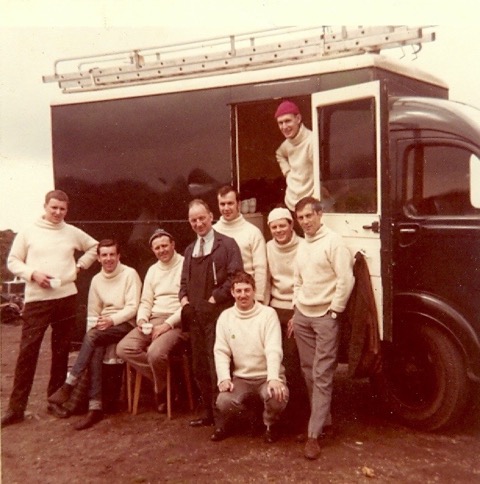
Leicestershire was the home of England’s newest Maximum Security Prison at Gartree. It housed the U.K’s most notorious criminals and spies etc. Because of this, we were the first Force (outside the London Met) to be issued with firearms. This consisted of a .38 revolver and a .303 rifle, the pistol was kept locked in the glove box, together with the rifle ammunition and the rifle locked in the boot (trunk) with the pistol ammunition. This closely guarded secret was kept until one day the prisoners at the old maximum security prison in Leicester rioted. We were immediately dispatched to provide security just in case there was an escape attempt. Upon arrival we were ordered by a senior officer to exit the vehicle with our weapons drawn to provide a deterrent. The next day our pictures were on the front of the national press asking when and why the U.K. police were armed.
On another occasion whilst on patrol on the A1 Great North Road (from London to Scotland) we received an urgent crime message of a robbery, this entailed returning to the station to pick it up as it came via telex (remember those days?). The message related to an armed robbery that occurred in Yorkshire with the offenders believed to be a London gang and a detailed description was given of the vehicle involved.
Collecting this message involved a 10 mile trip back to the station and the same to return back on patrol, so we expected the suspect vehicle to be long gone. You can imagine our surprise when upon rejoining the A1 we found ourselves right behind the suspect vehicle. Not wishing to let them know that we knew, we just followed on behind (radioing where they were). The suspect vehicle began to slow down, so we naturally overtook, trying to remain calm and act as a normal patrol vehicle. I was in the passenger’s seat and dare not look at them as we passed. Suddenly, there was a loud explosion and the window alongside my head shattered, we realised immediately that we were being shot at and we sped off into the distance again radioing what had just happened.
Miles down the road we were joined by other officers from adjoining Forces and together with our firearms set up a road block. The vehicle and suspects arrived shortly thereafter and immediately surrendered. Upon examining our vehicle, both the front and rear side windows were shattered; the only thing that had saved me from the shotgun blast was the door/roof pillar between these two windows. I was totally unharmed, just covered in broken glass; my driver only suffered cuts from the flying broken glass. We marked all the shotgun pellets with yellow crayon on the white Jaguar for photographs in the court case. I remained on traffic duties until my resignation in November 1970, in order to accept an appointment with the Bermuda Police. As all that foreign travelling as a child in Africa had made me yearn for a warmer climate.
I was one of many officers who travelled to London to be interviewed and subjected to various medical examinations. The interview process conducted amused me; rather than inquiring about my police abilities, they asked what type of sports I played as they were looking for so many cricket, football and rugby players. I didn’t fit the bill on that request, but managed to be accepted because I was a Police Diving Instructor (more on this later). The majority of the recruits they accepted travelled to Bermuda in the summer of 1970, however, I had many outstanding Crown Court cases which I had to complete before I could travel abroad.
I eventually arrived in Bermuda on the 1st December 1970 with two other Constables, Bob Allen from Scotland and Kevin Hamilton from Liverpool. We travelled together on the plane in adjoining seats and apart from casual conversation, none of us realised we were all Police Officers or intending to join the Bermuda Police.
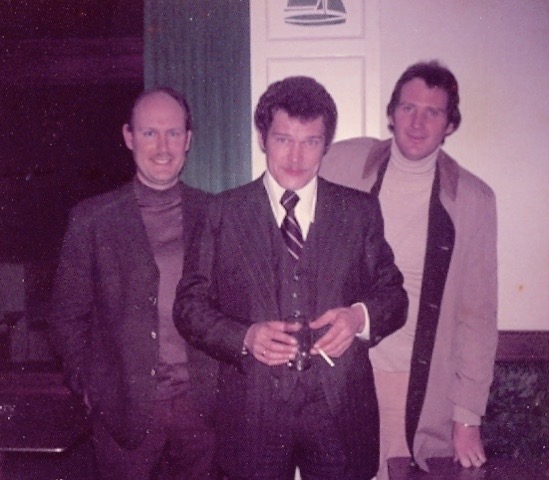
Upon arrival in Bermuda we were all met by Constable Alan Barker from the training school and were taken directly by Ford Transit with grills on the windows (why we wondered) to stores at Police Headquarters to obtain our ‘Riot Gear’. Bermuda was apparently in the midst of riots, much to our surprise or we might not have come; (hence the grills on our Transit – the clue was there eh?).
The next day, Kevin was directed to CCID as he was previously a detective in the U.K. Bob was directed to Hamilton Station as a beat officer, which he was before. And I was directed to Operations as a previous traffic officer.
Upon arrival I was met by the Control Sergeant ’Doc’ Hall and the Patrol Sergeant Jeff Payne. They called in a car to take me out on the road and to my amazement (and his); the driver was one Pete Treeves, who can you believe this, we both lived in the same place in South Africa many years ago?
I was eventually taken to the Transport Control Department (TCD) to obtain my Police Authorisation to drive and then sent off on my way. Here the adventure began…. I was given a tourist map, a 10 series radio code card and a Ford Cortina GT patrol car with a tank full of gas and sent out on patrol in area 2. I had no idea where this was and was informed it was the western end of the island from Cobb’s Hill Road up to Somerset Bridge. So out came the map to find out exactly where this was and off I went.
It wasn’t long before the radio crackled and I heard “Tango 4 10/5 (answer me)”. I continued driving not realising that it was me they wanted, until it kept repeating the message. Out came the 10 series card again and I said “Yes”. They politely reminded me of the correct response (10/4) and then came “10/20 (go to) to a 10/56 (non injury accident) outside Warwick bowl”. So out came the card again and I looked up these two new codes. Then out came the tourist map to look for Warwick bowl (which of course wasn’t on the tourist map!). The message kept repeating and I told them to wait a minute (whilst I looked it all up), to which they came back do you mean 10/3 (wait)… and so began my initial few days on traffic.
Traffic in those days provided ‘cover’ to attend to all the calls whilst the three territorial Divisions changed their shifts. The traffic shifts started one hour earlier than the other Divisions and this prevented a gap in the hour of enforcement on the roads at the start and end of each shift when the Divisional cars would be off the road for shift changeover, paperwork/reports etc. This was something both the motorists and criminals alike would have taken advantage of. It was interesting to note that traffic working night shift often ended up making more arrests for crime than CID because of this!
The first month passed quite quickly as I travelled and explored all around the island. Before I knew it, Christmas had arrived, which I spent on the beach (not like the snow covered U.K. that I had just left). I then had an invite to join Mike ‘Dagwood’ Rickards and his family for Christmas lunch and all the trimmings, this was much appreciated being so far away from home, family and friends.
Then along came the New Year, where I was at a party in the Police Recreation Club (PRC). Suddenly, an announcement was made that there was a general call out and everyone was to report to Operations in their riot gear. Off I went to the barracks, where on the way I found the whole area of Police Headquarters in darkness. Once kitted up, I ran from the barracks to go down the hill to ‘Ops’. Suddenly, at the top of the hill, I was struck violently in my stomach and got knocked over. When I eventually got up, with my stomach aching, I continued to make my way down to Operations.
My colleagues noticed the buckle on my Police belt was bent double, so a group of us immediately went to investigate the culprits of my attack at HQ. It was only then when they discovered a very bent old American ‘Stop sign’ at the top of the hill (that I had run into in the darkness). So it wasn’t assault on Police, but rather Police damage to a ‘Stop sign’.
I was assigned to a Riot Squad jeep and told two important things. Firstly, note who you are with, so if anyone goes missing you will know who they are (the only problem there was, firstly I didn’t know anyone and they were all wearing gas masks, so I couldn’t tell anyway)! Secondly, never split up (as it could be dangerous duh!). Well, we went down to Hamilton on patrol and I was sat at the back of the jeep near the rear door. As we came down Kyle Hill to Victoria Street by the Telephone Company corner, I saw a youth throw a fire bomb into a building. The cry came out “let’s get him”, I shot out the back of the jeep like a rocket and chased the youth (in those days I was really fit). I finally caught up with him on Angle Street near Dellwood School and again all was in darkness. I look around and it was just the two of us, no other Policemen in sight. I had broken one of the golden rules ‘don’t split up’. I figured the rest of the cavalry would be right behind me, only to find out later they couldn’t keep up with the pair of us and had no idea where we went. I promptly told the lad we were going to the Police Station, (I had no idea where that was); fortunately he took me there, thank goodness.
In March of 1971, I was off to the Training School on a localisation course with the next batch of newly arrived recruits (the three of us who arrived in December had missed the previous course). It was there I met another old face. Maurice ‘Moby’ Pett who had worked traffic in a neighbouring force Staffordshire in the U.K. (I worked in the next county over in Leicestershire).
Later in my service I met two others, Peter Gimson from Lincolnshire and John Baxter from Bedford and Luton. Both of these like Moby, I had met whilst dealing with road traffic accidents near the borders of our neighbouring forces.
Following training school, I was posted to the Mobile Reserve or Riot Squad depending upon who you talk to, but it was more commonly referred to as ‘F’ Troop, under the command of C/Insp ‘Jellybean’ Wingood. As the driver, my Jeep’s crew consisted of Peter ‘How are the Boys’ Blogg, Kenny Blow, Alexander ‘Sandy’ Duncan, Kevin Hamilton, Colin ‘The Animal’ MacDonald, Peter Swan, and Anthony ‘Tinker’ Taylor.
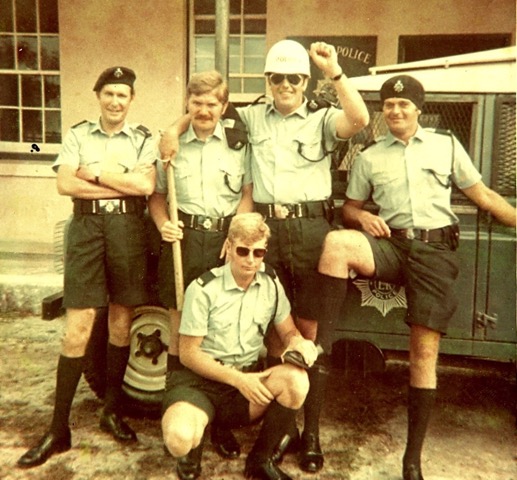
The unit was eventually disbanded when the ‘troubles’ subsided and I naturally expected to go back to Traffic. On no I was told, I hadn’t been on the island long enough, you have to be here two years before you can specialise. I explained that is where I had been for the last three months, but it all fell on deaf ears. So off I went to Eastern Division St George’s station and barracks.
It was a short three months later that they finally came to their senses and I eventually returned back to Operations and the Traffic Department.
Thus began my many transfers, where I eventually ended up working in every Division on the force and in all departments except the garage, radio shack, or Motor Cycle Patrol Section (MCPS). However, I used to ride a Triumph motorcycle on traffic (before the MCPS unit was formed). In those days one officer was on patrol in a car and one on a bike on the day shift and also before meal break on late shifts. With double crewed cars after the meal break on late shift and all of night shift.
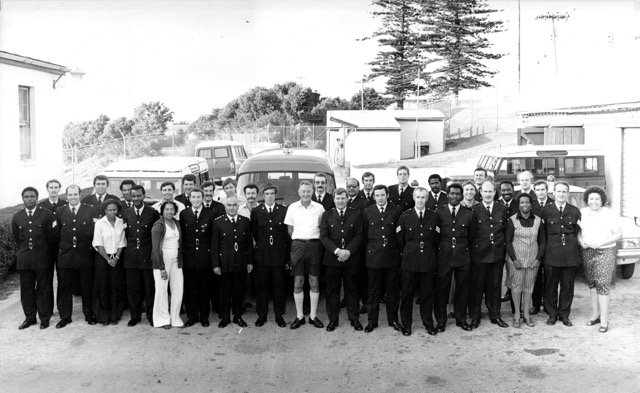
I had the pleasure of working with many great colleagues in the Traffic department over the years namely Tommy Doyle, Ennie Moniz, Derek Taylor, Arthur ‘Whistler’ Rose, Eddie ‘Boxhead’ Foggo, Dave Cook, Roger Sherratt, Mike Rickards, Russell ‘The Bull’ Paynter, Johnnie McConnie, Tango Burgess, George Rush, Michael ‘Spurgeon’ Phillips, John Graham, Doug Rogers, Davie Kerr, brothers Erskine and Archie Warner (the latter now the Senior Magistrate), Willey Bourne (later Attorney General), Mike Jent, John Baxter, Ray Bell, Barry Higham, Steve Peterson, Andy Hall, Stuart Craig, Anthony ‘Tinker’ Taylor, and many, many more over the years.
In 1971 I had my own Road Safety Television show on ZBM/ZFB on Saturday mornings. I was known as ‘Road Safety Roger’ (RSR), working with Dorothy Broadhurst. This was one of the ideas I had brought with me from England known as the Police Schoolchild Relationship Scheme. This project was eventually followed by the Bermuda Police Road Safety Bus which visited all the island primary schools giving lectures and showing Road Safety films. It was operated by Bernie Pitman and a group of his colleagues over the years namely, Steve Dean, Matt Lindo, Richard Basden, Paul Birch, Billy Fox and Mark Norman. This was undoubtedly the best interaction between the youth and the Police in forming trust and friendships, an idea now being considered yet again by the powers that be to overcome the gang culture.
In 1972/73 came all the murders (Commissioner Duckett, Governor Sir Richard Sharples and his ADC Captain Hugh Sayers and of course the double Shopping Centre murders of Victor Rego and Mark Doe), this is where I found myself transferred to the Murder Squad. Transfers continued during that and the following year between Traffic, Murder Squad and Central CID. It was during this year I received the first of my Bermuda Commendations, together with Constable Willey Bourne for courage, skill and initiative in arresting a man with a knife threatening the life of Lois Browne-Evans’ father.
In February 1974 I was again attached to the murder squad and whilst conducting a search in the Marsh Folly area we got a 10/55 call (officer need urgent assistance) from two CID officers in Hamilton parish. My driving skills were really put to the test driving a jeep at high speed to the scene, without turning it over, but scaring the daylights out of the occupants in doing so.
Upon arrival we found a severely injured Detective Constable Perry Fox. His life was undoubtedly saved by Constable Gary Morrell* prior to the ambulance arriving. His colleague Detective Constable Bob Porritt directed us to where the machete wielding offender was hiding, so my colleagues and I armed with riot sticks and wicker shields (the riot gear from our jeep in those days) set off to apprehend the individual.
He was a very violent man and eventually I was able to knock him to the ground and grab him in a bear hug, but ended up landing on top of him. To my misfortune, my colleagues continued to try disarming him with their riot sticks, but unfortunately I bore the brunt of their attack with many bumps, bruises and welts to my arms, back and head to prove it. I later ended up in the PRC and downed a bottle of brandy to sort myself out. Can you believe up to this point I was ‘tea total’ and didn’t drink! That was the second Commendation I received for zeal and courage in making that arrest.
In June 1974I was summoned to Special Branch where I met Superintendent Andy Birmingham. He gave me the keys to the Commissioners Humber Hawk and told me to gas it up, wash and polish it. I was asked if I had a decent suit, and upon answering “yes” I was told to then go home pack a bag for a few days and report back where I would be told what it was all about. Upon returning I was told to report to the Sonesta Beach Hotel where I would act as the chauffer/bodyguard/interpreter for the President Kenyatta party from Kenya that were staying there (remember I spoke Swahili).
In 1975 I received specialisation training from the Special Air Services (SAS) at a Royal Protection Chauffer Course on the U.S. Naval Annex. I later drove various members of the Royal family during their different visits to Bermuda, including Prince Charles, Her Majesty the Queen and the Duke of Edinburgh and various other VIP's.
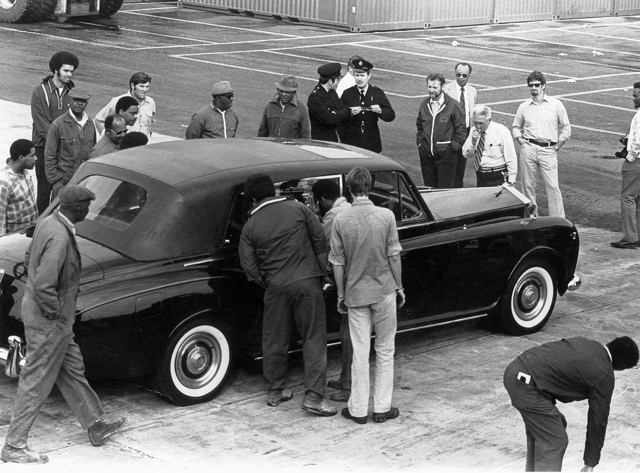
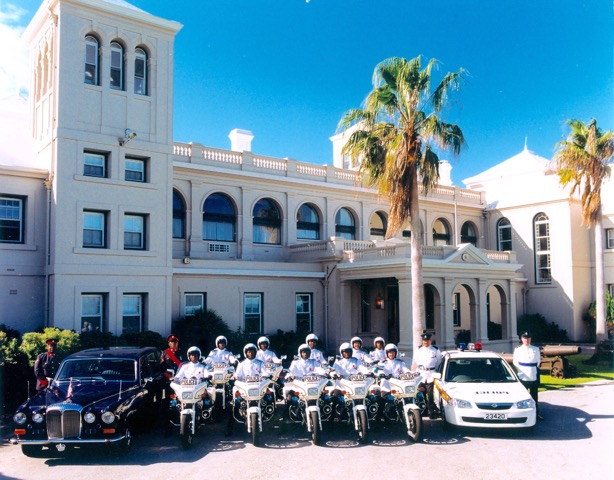
During the 1970’s and 1980’s traffic patrol cars used to all assemble on Kindley Field Road to have their speedometers tested over the measured half mile with Inspector Ernie Moniz and TCD Chief Examiner, Lenny Doares. Each Patrol Car was then issued with a card showing the speedometer reading and the actual speed in order to accurately determine the speed of vehicles being chased.
This was later made much safer when the Police Garage staff Keith Pratt and Owen Marsh obtained a rolling road machine for the Prospect garage, where the speedometers could be tested much quicker.
Such was the speeding problem at that time, especially with Pack Racers, that a Radar Section was formed where I worked for many years. Some of you will recall the old fashioned ‘black box’ that could only catch speeders in one direction and was easily disrupted by people placing tin foil in the hub caps of their vehicles, (which sent the radar speedometer haywire). This was followed by the mobile radar (that looked like a searchlight) which could be operated from the roadside or within a patrol car. This much improved model could catch speeders in both directions and was not affected by interference.
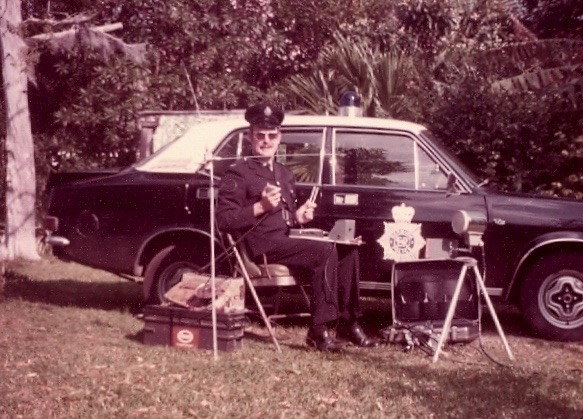
After working with the American Military Police on the Kindley Field base and observing their equipment, I eventually introduced the Hand Held Radar machines and the forerunner of the present ticket system to the Force (this was however just an invite to attend court and not a summons like today). This finally moved us into the twenty first century, however, that speed detection device has now been replaced by the far more accurate Laser Speed Detection equipment and summons tickets are now common place.
Now for a few TRUE stories from the radar section. Whilst operating radar on Trimingham Road (hill), a young ‘diddlybop’ came through at 31 mph (yes it was in mph in those days). He was stopped and said “can you make it a bit faster as I will be ribbed by my mates at such a slow speed”. Answering no, he was reported for ‘31’.
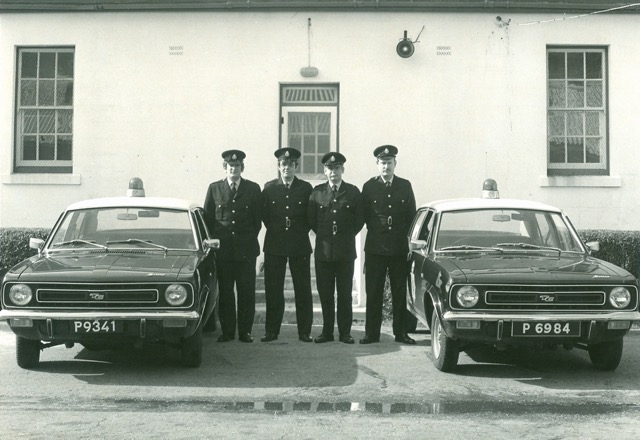
He later appeared in court before the Worship K.C. Nadarajah, who asked him how did he plead? He replied, “Not guilty” and the evidence was read. He was asked if he had anything to say and he said “I wasn’t going that speed”. When asked what speed he thought he was going he replied “41”. He was convicted of that speed on his own admission and he left the court fined and disqualified, but much happier he hadn’t embarrassed himself in front of his mates for the original slow speed.
On another occasion whilst working on Mangrove Bay Road in Somerset (where there was a 15 mph speed limit) a motorcyclist went through at 32 mph and was stopped by the chase vehicle. He was adamant that there was no radar on the road and that the officer was obviously lying. He was told where the radar was located and he came back, only to pass through at 36 mph! He was stopped and booked yet again. Even angrier, he still stated that there was no radar. He was told exactly where the radar was located and turned round yet again, this time approaching at 34 mph. I jumped out of the bushes and stopped him and he was given a third ticket, where he pled guilty to all three charges.
One way we disguised the radar unit was to place it in a paper bag on the side of the road (where we could get the most accurate readings). One night in Smiths, a young rider wearing ‘flip-flops’ came along and kicked the bag containing the radar as he passed by, only to suffer a broken toe and place a dent in the unit (which fortunately still worked).
Finally in Flatt’s village at another 15 mph speed limit, I had occasion to report a motorcyclist for speeding at 31 mph. When he appeared in court he was defended by Lois Brown-Evans. She had obviously done her homework on this one, so let me explain. “Officer” I was asked “of the many speeders you detected that day, what number was my client”? I replied he was the thirteenth.
I was asked what the licence plate number of his cycle was, and I replied 1313. I was then asked what the date of the offence was and I replied the 13th of the month. She then asked if the alleged speed is reversed what would it be and of course I replied 13. Much to the laughter in the court the magistrate gave him a conditional discharge.
Fast forward to 1977 where the island had major riots, causing severe damage and deaths following the hangings of Buck Burrows and Larry Tacklyn for the 1972/73 murders, this was a very tragic period for the whole island.
That same year, unknown to me, I was about to be transferred to the Driving School, so Inspector Ernie Moniz (OIC Ops) had the force official driving examiner Inspector Peter Stubbs take me out for a driving test to become a Grade 1 driver (which thankfully I passed). I was already a Class One driver from the U.K., but had never gone on a driving course in Bermuda and a grade 1 certification in Bermuda was now one of the requirements to work in Operations and obviously the Driving School.
At the time I was working radar with Dave Ashurst and Steve Rollin. One day we were working a day shift and when I arrived for work, they both told me I was in the wrong place and I should report to the Driving School. I gladly trotted up the hill to the old training school in the clock tower block and joined the other lads in the classroom.
In walked Sergeant Derek Jenkinson who inquired “what was I doing there”? I informed him I was told I was on a driving course. He then said, “Yes you are, but not down there with them, you are up here with me”! He then said I should begin the lectures on cornering, skidding and gear changing. I said “what do you mean”? He said well you are a Driving Instructor aren’t you? That’s what Admin told me. Remember, I was recruited as a Diving Instructor, but admin got it wrong on my file (a true story).

Having passed my promotion exam; I began my long career in and out of both the Driving and Training Schools. In 1979, I attended the first of many overseas courses the first was when I attended the West Yorkshire Constabulary on an Advanced Driving Instructors Course in England.
Now for a few TRUE Driving School stories, (where only the names have been withheld to protect their embarrassment). We had just had seatbelts fitted to our vehicles, when a certain well endowed young policewoman came to the driving school. When told she had to wear the new belt, she complied, only to then state “It’s just like a Playtex living bra; it lifts and separates (no comment).
Students were instructed to always drive straight ahead, unless they were told to turn left, right or stop. On one occasion we were coming out of town on the three lane road approaching the north roundabout (on what is now the inbound lane of East Broadway). The student asked “which way do you want me to go”? I replied “straight on”, meaning up and over Trimingham Road (hill). He did just that, right over the top of the north roundabout!! You can imagine how amused Keith Pratt from the garage was when he saw the state of the car (do you know how high the curb is on that roundabout?).
In another incident, I had to change the way I instructed students during their drives. We were approaching a particular junction where I wanted the student to turn right. So I said “turn right at the next junction”. As soon as I said “turn right”, but before I had finished the sentence, that’s exactly what he did and turned right, straight through a hedge and into a field (so an unhappy Keith Pratt yet again). I soon learned to reverse my sentence by saying “at the next junction, turn right” and that solved the problem going forward.
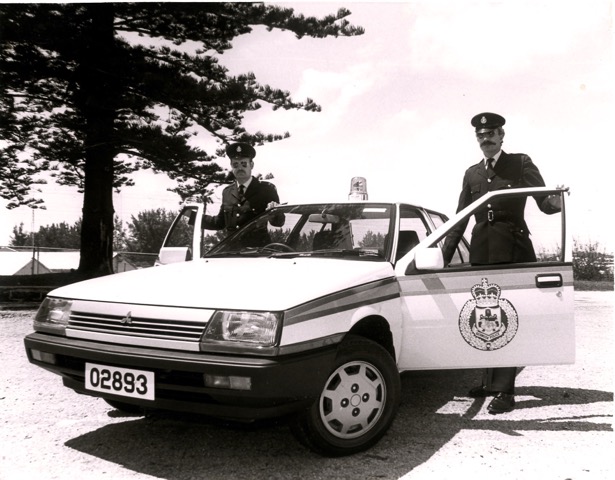 Driving School Instructors Roger Kendall and Charlie Mooney with their
Driving School Instructors Roger Kendall and Charlie Mooney with their For those of you that passed through the driving school, you will recall the infamous 18 point daily inspection check. Here are two stories that relate to that. We emphasise that when checking the tightness of the wheel nuts its ‘right for tight’. This is because on one journey, we noticed the vehicle sounding and was acting strangely. We stopped and discovered the left rear wheel about to fall off; the student had each day been turning the wheel nuts to the left!
Finally, upon getting into the vehicle at the beginning of the day after the 18 point check had been completed by the students, I asked the driver if the car had needed any oil, (so I could record this in the vehicles log book). He replied “yes I put in three quarts”. I said “do you mean three pints”? (Even that was excessive). No he replied “three quarts”. We all got out and looked under the bonnet and he explained how he had great difficulty pouring the new oil down the dipstick hole, and low and behold underneath the car was a large pool of the spilt oil!
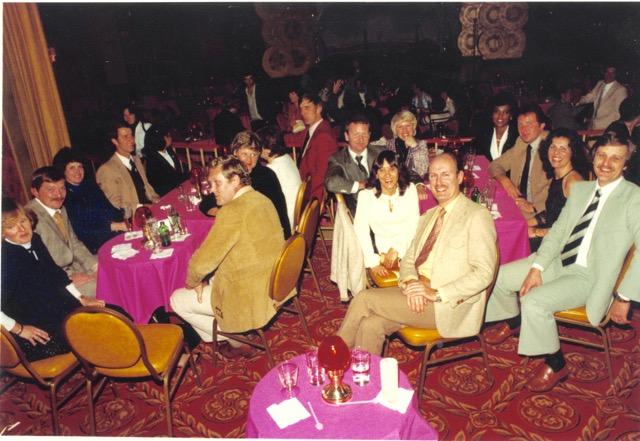
In 1981 I was promoted to Sergeant, where they changed my force number from 323 to 70. And in 1982 I attended the American Motorcycle Safety Foundation Instructors Course at the U.S. Naval Air Station in Bermuda with Constable Gary Venning.
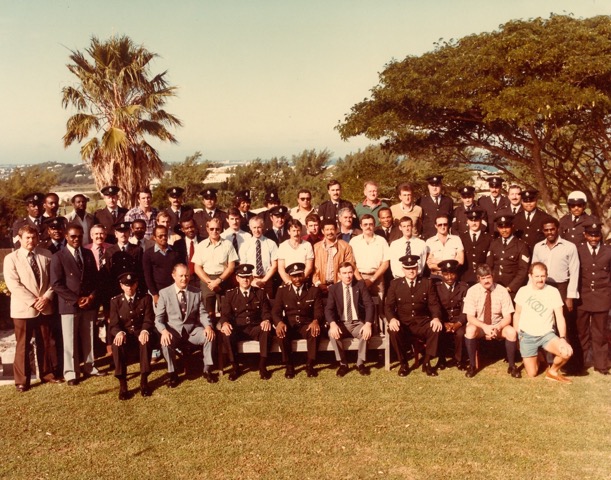
I later had the pleasure of working with two very talented Constables, Gary Venning and Greg Hopkins; both were U.K. trained Traffic Accident Investigators (TAI’s). Gary’s valuable work on the fatal Ferry Reach powerboat race accident made the service realise they should move with the times and train more officers in these skills. Accordingly, in 1984 I was dispatched to the Ontario Provincial Police Academy in Canada on a TAI Course. Upon my return to the island the Traffic Accident Investigation Basic Course was then incorporated to the Advanced Driving Courses that we taught.
This same year the Force formed the Traffic Accident Investigators Team (TAI’s) which included the above two officers and Sergeant Charlie Mooney, my colleague from the Driving School. We were required to attend to all fatal, potential fatal and any serious emergency vehicle (Police, Fire and Ambulance) accidents. Later that same year I was awarded my 18 year LSM.
It wasn’t until this year 1982, that I was able to use my now rusty skills as a Diving Instructor when I was finally involved in the first Underwater Search Course with Phil Every. We then formed the new Underwater Search Unit (USU), later renamed the Underwater Search and Recovery Unit (my colleagues being Davie Kerr and Terry Maxwell), searching for drowning victims, as well as recovering items related to crime (weapons and property etc).
In 1985 I moved up to the next level and attended the Advanced Technical Traffic Accident Investigation Course at the RCMP Canadian Police College in Ottawa. This was my third overseas course and I wondered why they always sent me on these courses in the winter time!
In 1987 and 1988 I was awarded my Bermuda Police Safe Driving awards (remember those?). They should bring those back as I am sure it would reduce the accident rate the BPS are now experiencing.
In 1988 I attended the first Alco-Analyser course, the dreaded breathalyzer, which would have a great impact on road safety, much to the dismay of the local bars and my drinking serving colleagues.
In 1989 I was transferred to a watch in Central Uniform and then later to Eastern Uniform and in 1990 I attended an Investigation Course on Motorcycle Accidents at the OPP Academy in Canada.
In 1991 I was awarded the 25 year clasp to my LSM. That same year I was transferred to HQ administration and later Press Liaison Officer (following in the footsteps of Tony Diggins and Roger Sherratt). I was promoted to Inspector on 1/8/91 and then became the Supreme Court Officer. Later that same year I was transferred east as the Airport Security Officer.
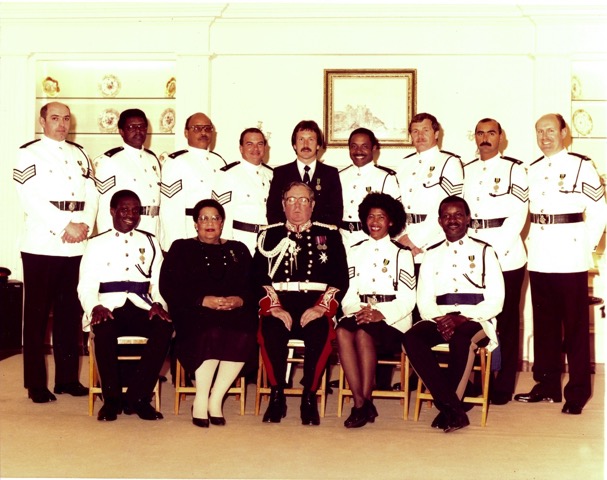
At this time I was also responsible as OIC the Emergency Response Team (ERT) and the Explosive Ordinance Disposal (EOD) Team; and in 1992 I joined both units with the Bermuda Regiment at the U.S. Marine Base Camp Lejeune in the United States. Later that same year I attended an Explosive Ordnance Disposal Course taught by the British Army in Bermuda.

In 1992 I was transferred back to HQ and also again to and from Central, Eastern and the Airport.
In 1993 I again attended the Bermuda Regiment camp with the U.S. Marines in the United States together with Graham Alderson from our EOD team.
Upon my return from Camp Lejuene; I was immediately thrust into the production of ‘Bermuda Grace’ a film being shot in Bermuda. I was responsible for collecting the Lotus Sports cars from the airport and driving them around the island to the various locations. This was the third line of films I had been involved in. The first being the ‘Ivory Ape’ staring our own now famous Sergeant George Rush and this was followed by the hit movie ‘The Bermuda Deep’. This film established the world’s largest underwater film set in Sandy’s near Lefroy House, unfortunately since destroyed.
It was during 1993 that I joined Stuart Kirkpatrick in attending the Firearms Training Centre, in Atlanta, Georgia, U.S.A, where we received training in the use of the Firearms Training System (FATS) for the joint use of the BPS and Bermuda Regiment on this new equipment which was purchased.
Later that same year I again attended the Canadian Police College on a Senior Police Administration Course, where I was privileged to be appointed valedictorian, a proud honour for an overseas officer.
In 1994, I attended an ERT/EOD Search Techniques Course at Warwick Camp conducted by the British Army. The same year I was appointed OIC Eastern Uniform and in 1995 I also became OIC Western Uniform. Having previously been appointed OIC Central and OIC Operations, I had now commanded all four uniform Divisions.
In October 1995 I was seconded by Commissioner Colin Coxall for a period of 6 months to the Government Management Services Department (my first taste of life outside the Police Service). During this time I was extensively tasked in the research and planning involving the reorganisation, restructuring and civilianisation of the Service which involved in implementing 112 identified strategies over a 3 to 5 year period. I was also involved in the Criminal Justice Information Services (CJIS) computer implementation project between the BPS and all other inter-related Government Departments (i.e. Courts, TCD, Prisons and Probation Services etc).
In 1996 I received the 30 year clasp to the LSM and was promoted to Chief Inspector and transferred to HQ as the Commissioner’s Staff Officer and liaison officer between the BPS and the King Edward Hospital, Bermuda Fire Service and the Bermuda Regiment (and all other foreign military units).
In October 1996, I was contacted by Superintendent Vic Richmond and asked how my sea legs were. He told me to stay by the phone and await a call from the Commissioner, who called a few minutes later and he also asked me the same question about my sea legs and also my sea experience (which was limited to a cross channel ferry trip on my honeymoon). I was told to pack a bag for a few days (deja vu all over again eh?), and this is how I became involved in the infamous Xing Da incident.
I was flown by helicopter to a flotilla of ships to the south of Bermuda which were fleeing from a hurricane. I was appointed as the liaison Officer between the BPS, the Bermuda, U.K., U.S.A and Chinese Governments aboard a U.S. Coastguard Cutter. This was often without the benefit of advice from more senior officers due to time constraints and failing communications being so far offshore.
The Americans had intercepted a Chinese freighter with illegal immigrants on board heading for the U.S.A. The ship had become un-seaworthy and with the approaching hurricane decided to head for Bermuda. My few harrowing days at sea produced some horrific memories, which began with the dangerous helicopter landing on a rolling and pitching ship in stormy seas. During my transfer by small boat to a second Cutter (my home for the remainder of the incident), again in stormy seas, a crew member was washed overboard only to be rescued by helicopter in the dark of night. On that short journey we came alongside the Xing Da and even before we approached it you could smell the ship in the dark (I won’t go into what the smells were!). I took photographs which were used in an article I wrote for the Police Magazine showed the appalling conditions that they were subjected to.
The refugees/illegal immigrants were later brought ashore to Bermuda only to be flown back to China. The enforcer crew were also landed in Bermuda only to be immediately shipped off to Guantanamo Bay in Cuba. This combined operation involved three U.S. Coastguard Cutters, three of their aircraft, the U.S. State Department, U.S. Marshal Service, BPS and the Bermuda Regiment, in order to bring this sensitive International Incident to a successful conclusion.
In 1997 I was directly involved in the drafting and implementation of a considerable number of new legislative Acts including the Prosecution of Offenders Bill, the new Police Bail Act and the Road Traffic Amendment Act (involving impaired driving). I was also involved in the project to build a new Hamilton Police Station and Prospect Headquarters (yes way back then!!!).
Following the Drug Commission Inquiry of 1997, I was directly involved in the audit of all exhibits and found property. Policy changes were then written to Force Standing Instructions as to the correct storage, care, custody and inspection of all these items.
In July 1997 I attended a BPS Management Assessment Workshop at the Belmont Hotel for senior officers and later that same year I attended the Executive Development Course again at the Canadian Police College in Ottawa.
In April 1998 I was involved with Phil Every of the BPS, the Bermuda Fire Service and the Bermuda Hospitals Board in establishing the Emergency 911 Medical Dispatching System. In June the same year I was involved in establishing the BPS Emergency Broadcast System for use in Hurricanes.
In August 1998 I attended an advanced training course on Police Critical Incident Debriefing in Washington D.C. with the American Academy of Police Psychology. During that time the Capitol Hill shootings occurred and I, along with Tracy Adams and Mira Ingemann, were involved in debriefing members of the Capitol Hill Police.
In September of 1998, whilst taking my daughter to university in Halifax, Nova Scotia, Canada, the Swiss Air crash occurred. Through my contacts obtained at the Canadian Police College, I immediately became involved in this incident to provide both CISIM support and learn how a major aircraft crash is dealt with. As you can imagine, a very memorable experience, from which I produced a paper on this subject for the use of the BPS, BFS and the Bermuda Government.
Finally in October 1998, I became involved in the establishment of Bermudas’ National Critical Incident Stress Management (CISM) Team, and in the same month I attended a Public Order Senior Commanders Training Course.
In May 1999, I was appointed the National Traffic Enforcement Co-ordinator and OIC Operations. I remained in this position until April 2001, when I retired from the Bermuda Police Service as an Acting Superintendent, right back where my Bermuda Police career started some 30 long years ago.
My Police career here ended here, the same as many other ex Leicestershire ‘Coppers’ who have had the privilege of passing through the ranks of the Bermuda Police. You will no doubt recall some of the others, namely Tony Carr, Alan ‘Bex’ Bissell, Terry Warrilow, John Arlott, John Bradford, Cliff ‘Reverend’ Harries, and Robin ‘Bob’ Glenny.

I was awarded the Colonial Police Medal for Meritorious Service to the Bermuda Police in the 2001 Queens New Year Honours list.
Upon my retirement, I joined the Bank of Bermuda Security Department as Bob ‘Pudsey’ Hay’s number two. I soon progressed into the Disaster Recovery/Business Continuity side of the bank, which involved travelling all over the world visiting each office, establishing and then testing their emergency procedures; as you can imagine a job I really enjoyed.
In March 2002, maintaining my links with the Bermuda Police, together with Tracy Adams, Marsh Smith, Mira Ingemann and Doris Decosta I attended Ground Zero in New York city for a week to provide CISM assistance to the NYPD officers involved in 9/11, something none of us will ever forget. I continue to this day to be an active member of the BPS CISM team.
I remained with the bank for two years before being ‘enticed’ in October 2002 by an American Insurance and Re-Insurance Company XL Capital (now XL Catlin) where I have been for the last thirteen years. My responsibility included Health and Safety, Security and of course Disaster Recovery/Business Continuity. Again, this involved travelling to the United States and all over Europe establishing and then testing their emergency procedures.
I commenced pre-retirement with XL in March 2012 only work three days a week, which was nice, as every weekend was a long weekend. I officially retired in March 2015.
However, having said that, I am still required to remain as a Consultant ‘on-call’ and I have been going back to XL one day a week to assist my old boss (who had a stroke) and also to assist the three staff members who took over my three jobs!!
l I have been married to my wonderful wife Lita for 41 years. We have two children, our son Justin a Customs officer, married with two sons (both avid sportsmen) and our daughter Tina, who is a Deputy Head Teacher at a local Nursery School.
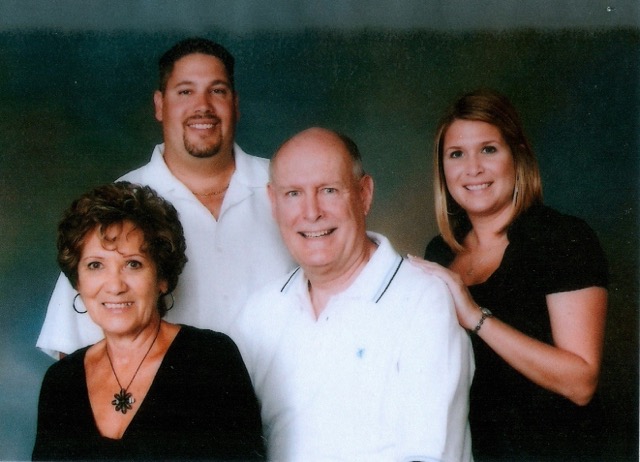

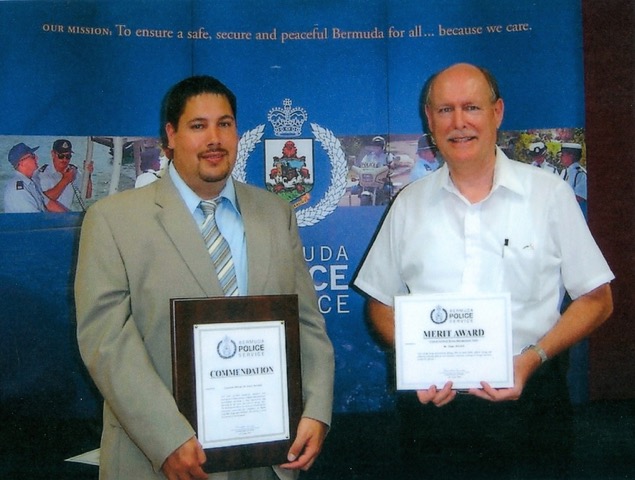
My spare time (what’s that?) is now taken up mainly with our grandchildren and also being an active member of the Bermuda Institute of Advanced Motorists, the Bermuda Road Safety Council, the Methodist Church Temporal Affairs Committee, the Police Critical Incident Stress Management Team and as Chairman of the Board for the Bermuda Red Cross. So as you can see, life is still very busy.
